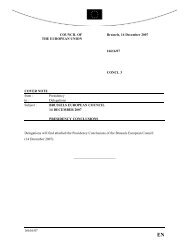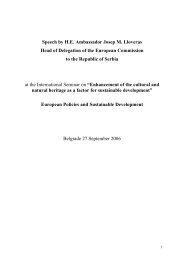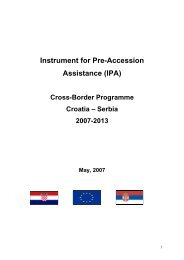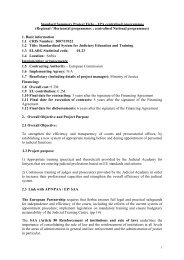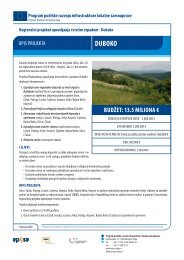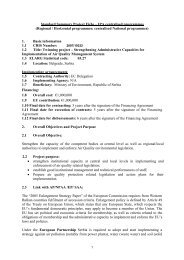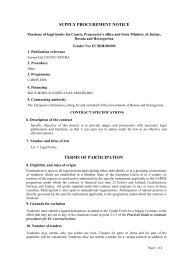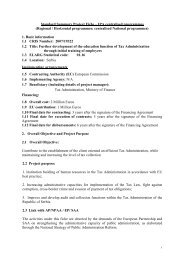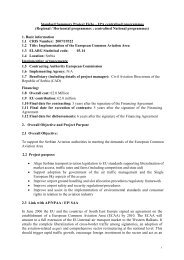YOUR SCHOLARSHIP IN EUROPE
YOUR SCHOLARSHIP IN EUROPE
YOUR SCHOLARSHIP IN EUROPE
You also want an ePaper? Increase the reach of your titles
YUMPU automatically turns print PDFs into web optimized ePapers that Google loves.
48<br />
Your Scholarship in Europe 2008-2009<br />
Denmark<br />
BASIC <strong>IN</strong>FORMATION ABOUT DENMARK<br />
The Kingdom of Denmark is located in Northern Europe between the North Sea and the Baltic.<br />
Its mainland territory is comprised of the Jutland peninsula bordering northern Germany.<br />
Denmark also encompasses two offshore territories, the Faroe Islands and Greenland in the<br />
North Atlantic plus 406 islands, 78 of which are inhabited. This gives Denmark a total coastline<br />
of 7,314 km, corresponding to a sixth of the globe’s circumference. The highest point is 170.68<br />
metres above sea level. The climate is temperate and coastal, January and February are the<br />
coldest months with an average temperature of 0.0°C and August is the warmest with an average<br />
temperature of 15.7°C. Average wind strength across the year is 7.6 metres per second,<br />
which helps explain why Denmark is the world’s largest exporter of wind turbines. 62% of the<br />
total area is cultivated, the highest percentage in Europe. The country’s population was 5.4 million<br />
in 2006. The national capital is Copenhagen (1.21 million inhabitants). Ethnically, Denmark<br />
is one of the world’s most homogeneous nations: 97% of the population is of Danish ancestry.<br />
Danish is the country’s offi cial language, but many Danes also speak very good English.<br />
Denmark is a constitutional monarchy governed according to the 1953 Constitution by Queen<br />
Margrethe II who ascended to the throne in 1972. Like other Scandinavian countries, Denmark<br />
has established a powerful welfare state with a strong social security system and small income<br />
gap enabled by highly effective industrial and agricultural policies and taxation.<br />
THE HIGHER EDUCATION SYSTEM<br />
In 2003, 52.5% of Danes who left school applied to higher education institutions. The percentage<br />
of women students was 58%. The total number of fi rst-year students was 47,000 in 2001.<br />
Of these, 4,000 were foreign students.<br />
Denmark’s higher education establishments are classifi ed into universities, professional academies<br />
and colleges.<br />
The university sector includes 11 universities, 5 of which are multi-faculty universities. The other<br />
6 specialise in engineering, education, veterinary science, agriculture, pharmacy, business studies<br />
and a variety of other disciplines. All university study programmes are research-based, and<br />
degrees, including Doctorate degrees, are awarded at undergraduate and postgraduate level.<br />
The Copenhagen University, which is the country’s largest, has 35,000 students while smaller<br />
universities have 3,000-6,000 students. The university education is offered at three levels:<br />
1) The Bachelors degree (B.A./B.Sc.) is awarded after an undergraduate programme of<br />
3 years, normally concentrated on one or two subjects. Programmes are self-contained and<br />
qualify both for occupational functions and for further study.<br />
2) The Masters degree (Candidatus) is awarded after a total of 5 years of study. The programmes<br />
qualify students for occupational functions and scientifi c work. Each candidatus pro-




